Meet Nelson Gary | Poet-Author and Associate Professional Clinical Counselor
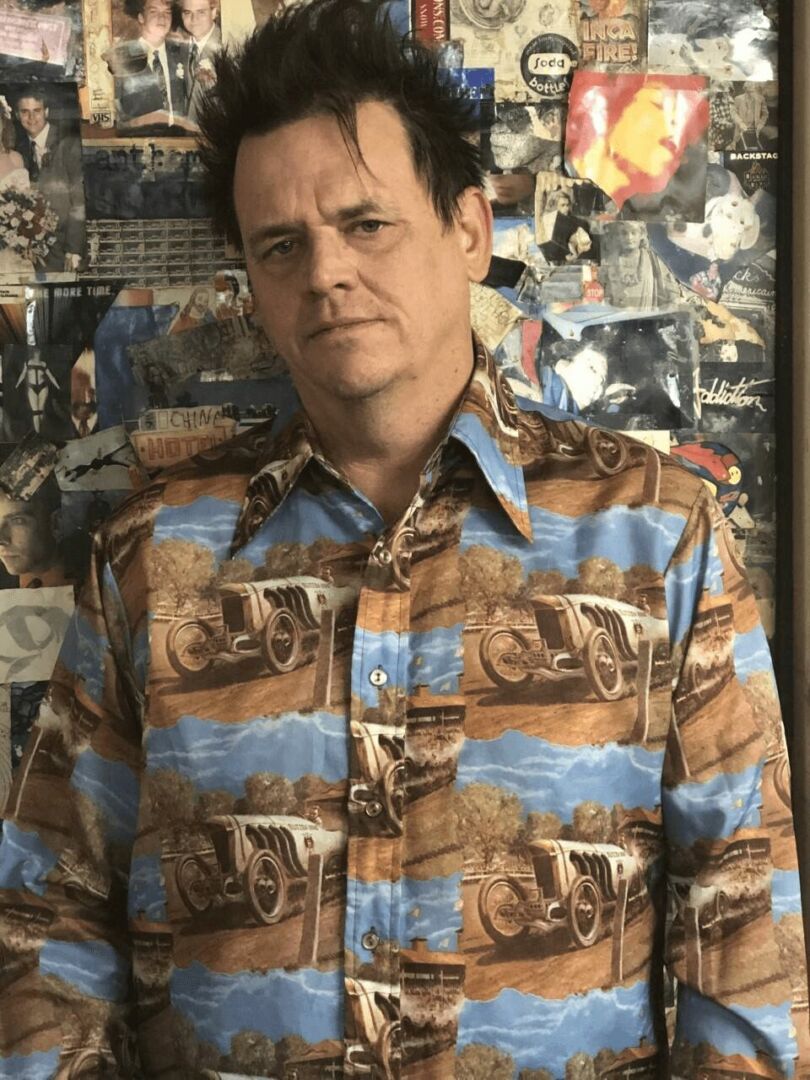

We had the good fortune of connecting with Nelson Gary and we’ve shared our conversation below.
Hi Nelson, what inspires you?
I’m inspired to better my relationships with the Holy Trinity, other people, places, and things, and myself through mainly pancultural methods of healing. I’m inspired to do what it takes to develop more empathic understanding, which is meeting others where they’re at and following the Golden Rule prescribed by Jesus Christ, my Lord and Savior: “Do unto others as you would have them do unto you.” As far as myself, I don’t have warm, happy, peaceful emotions about all of myself all of the time, but I am! inspired to love myself by treating myself well. This includes addressing where I’ve gone wrong with others and/or myself and mending matters. God in need of healing? Yeah! As above, so below, y’know. That’s right, as above, so below. God’s broken heart is related to the suffering in the world in more than one way. In terms of psychospirituality, I’m inspired by shamanism, Western psychology, Christian mysticism, Kabbalah, Kundalini yoga, Tamil Siddha twilight language (conversation about the void), Tantra, Tibetan Buddhist Chöd and crazy wisdom, Taoism, and one Orisha of the Yoruba religion, Aja. In Pharmacy Psalms and Half-Life Hymns—for Nothing, my current book, spirituality intersects with not only the Homeric tradition itself, but also what it has inspired in multiple fields, including psychology with respect to gaining insights into major changes in the history of human consciousness, particularly as it relates to religious beliefs and practices. As sure as the sun is hot, this has relevance today in most areas as a result of technological progress, which, like the invention of writing before it, has radically altered human consciousness in more ways than we know. Therefore, naturally, I’m inspired by consciousness and the unconscious mind as well as their verbal and nonverbal relationship. I’m also inspired by the relationship between the spiritual and material, and this is clearly shown in Pharmacy Psalms and Half-Life Hymns—for Nothing. Since the 1990s, I’ve been inspired to understand how people have communicated with deities, otherworldly beings, and a host of spirits (the conversations that form different amounts of the bedrock of major religions) in order to, at this point, have altruistic and evenhanded insight into revelations, delusions, visions, and hallucinations. This has resulted in having a theia mania (“divine madness”) practice. This practice guided the creation of Pharmacy Psalms and Half-Life Hymns—for Nothing. I took dictation from Lady Wisdom of Proverbs 8 in the Bible, whom I regard as the Holy Spirit, for the sake of healing others and myself. She and I have had a relationship for many years; I sometimes call her Helen Aja Hammersmith-Bond. My mother, grandmother, father-in-law, 17 friends and fellow strugglers died within a short period of time, most of them within 9 months; therefore, in Pharmacy Psalms and Half-Life Hymns—for Nothing, I was inspired to process loss and grief–belt out the blues!!! While there is writing about those who died, there’s much more of a focus on the experience of saudade, the presence of absence, with respect to my loved ones who are no longer physically here, breathing. When I started the book, I had recently earned a Master’s in Forensic Psychology. What inspired me most when I entered graduate school was to find ways to remove the revolving door between homelessness and incarceration, and replace it with something much, much better. I’ve found some ways to do this through the work of others and my own ideas. I’m inspired by R.D. Laing who stated, “Madness need not be all breakdown. It may also be break-through.” Madness needs to be worked with, not only worked against much more than it currently is. Far too often, there’s a wholesale dismissal of people’s experiences and even personalities because they voice their significantly individuated spiritual beliefs and practices. When revelations have delusional aspects, it’s these aspects that must be treated, so people can heal and enjoy their revelations more fully. To the tragic extent that madness is not being worked with and worked against evidences systemic cognitive distortion (all-or-nothing thinking), so I’m inspired to change this line of “unreasoning.” Pharmacy Psalms and Half-Life Hymns—for Nothing is many things, including a book of divine madness written to change this line of “unreasoning” and others. I’ve had three art shows, and I’m inspired to do more visual art for myself, yeah, but also because Lil Gary, my beloved, loving wife, would really like to see me do that. There’s no real getting around it: I’m inspired by nature, particularly the Woodland Hills-Topanga Canyon area where I live.
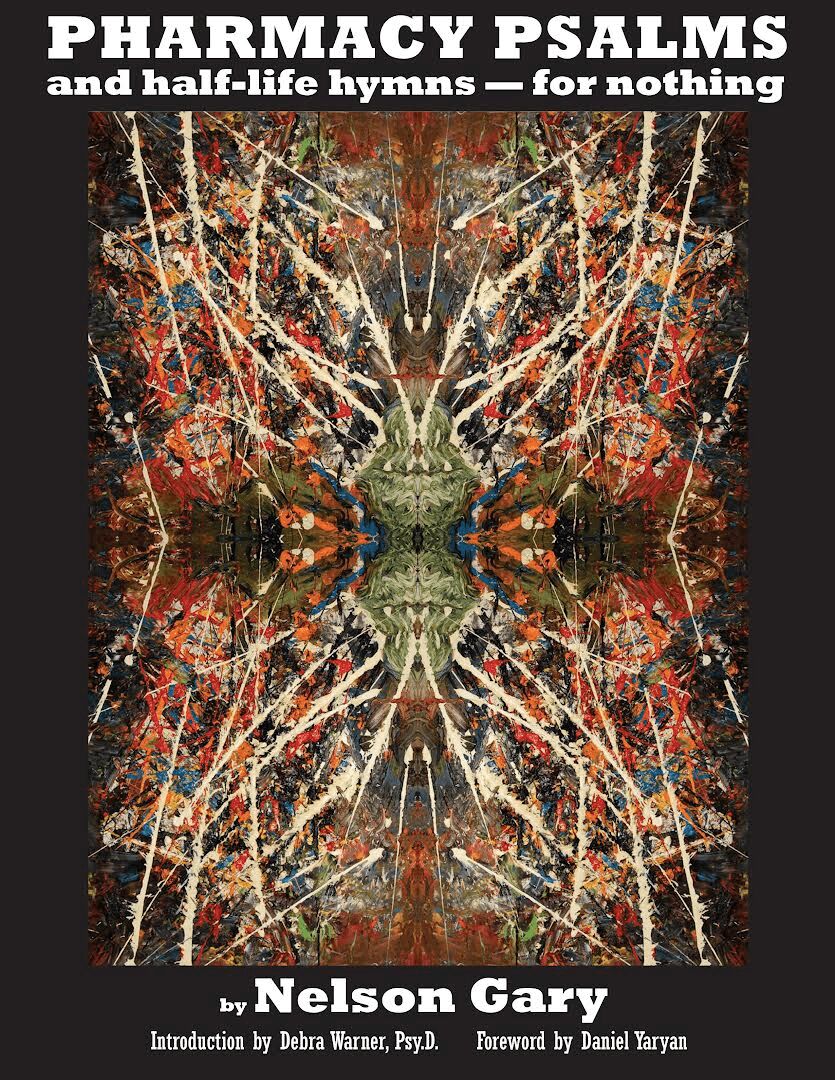
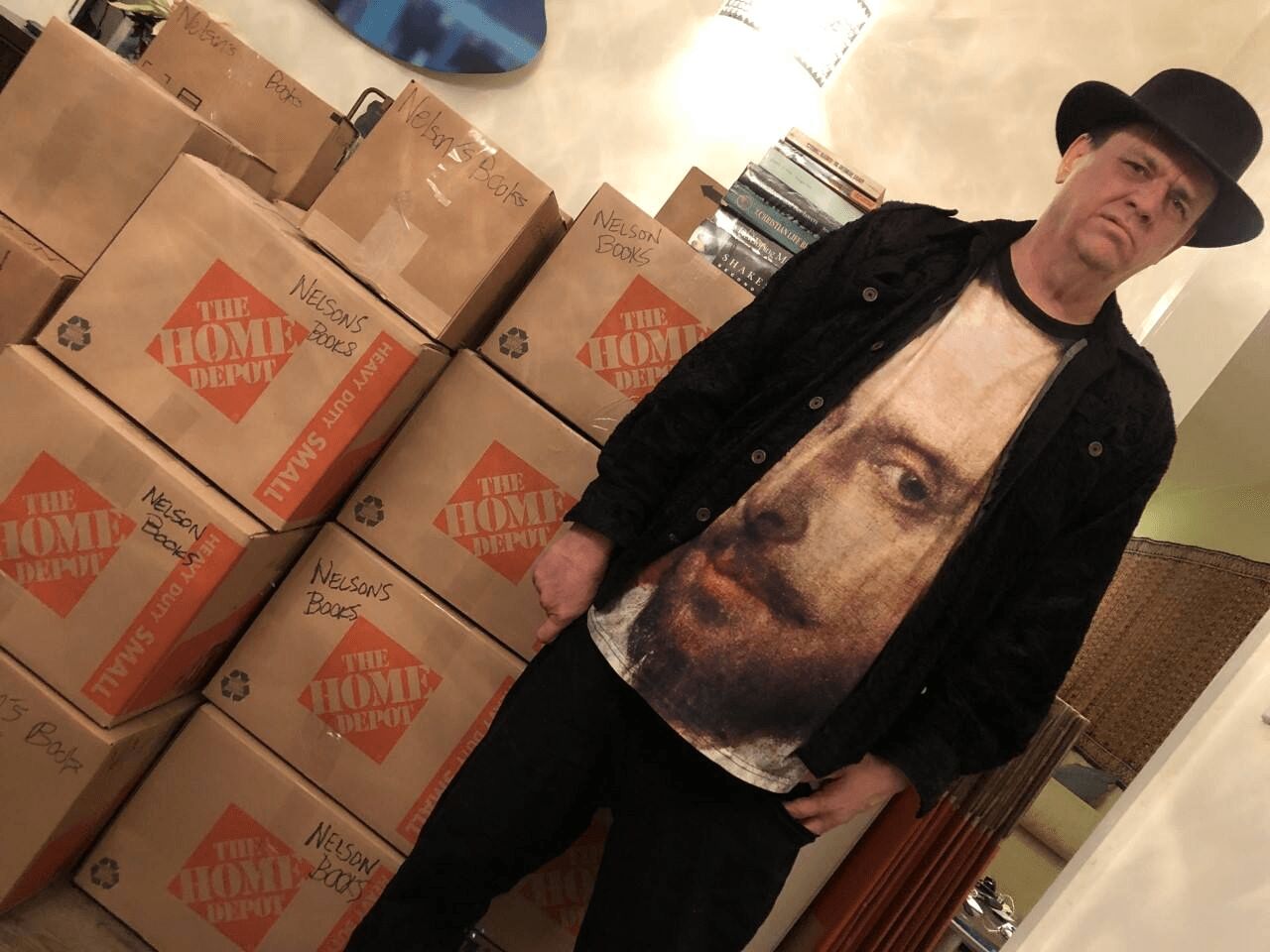
Alright, so let’s move onto what keeps you busy professionally?
What I’m most excited about is Pharmacy Psalms and Half-Life Hymns—for Nothing. What sets me apart from other wordsmiths and wordslingers is that I’ve successfully taken the word back to its source in nothing. I did this first by Goddesseying back to the time in the cradle of sacred literature when human beings documented their interactions with divinity. For as much time and even timelessness as Pharmacy Psalms and Half-Life Hymns—for Nothing covers, it remains predominantly focused on our historical moment for mostly the sake of healing in many areas, such as psychology through offering theoretical and practical insights into psychosis/psychospiritual overwhelm-emergence. How I got to where I’m at today as a renaissance person is the grace of God, love, peace, wisdom, understanding, resilience, and, of course, personal drive. On pretty much a daily basis, it all, however, starts with inspiration, divine inspiration, which is usually comforting but sometimes painfully convicting. Either way, this inspiration from the feminine Holy Spirit grows into faith to do and continue to do the work to hear the unheard, see the unseen, and share it with others—avant-gardism and/or innovation in fields other than arts and letters, such as, of course, spirituality and psychology—even quantum cosmology. What we know is that much, if not most, lasting innovation begins on the solid foundation of tradition. It’s been easy at times and hard at others to get to where I’m at. This has depended on how well I’ve been practicing love, peace, wisdom, and understanding internally and externally—more than anything else. How I’ve overcome challenges along the way with literature is practicing these virtues with faith in the Holy Trinity and changing my general creative focus from letters to art to rejuvenate myself and gain perspective on past writing. With my purely abstract art, I can’t do anything right any more than I can do anything wrong, and anyone can pretty much perceive this. And a lotta life is this way beyond these pieces of my art. Thoughts about right and wrong and many others about this, that, and the other thing definitely help us in life, but they also get in the way of seeing life as it is, especially as a whole. My purely abstract paintings stop those thoughts that get in the way of seeing life as it is. Life, in its pure and whole state as the space-time continuum, is neither right nor wrong. It just is. To riff on one of William Blake’s insights, my purely abstract art cleanses the doors of cognition through perception. Crucified with Christ, a painting you can see in this story, Christ naked on the cross, paramahamsas frequently skyclad, naked, me naked, transparent, in Pharmacy Psalms and Half-Life Hymns—for Nothing to the ends of starting Vénus Noire, an institution of social reform with a mission to help the homeless population mainly, but also others: institutional transparency. I’m super-excited about starting this institution! On my own or in partnership with a preexisting entity, either way, I’m going to keep going forward to open the doors of Vénus Noire. What’s a good thing to know about me is that I’m passionate about helping others.
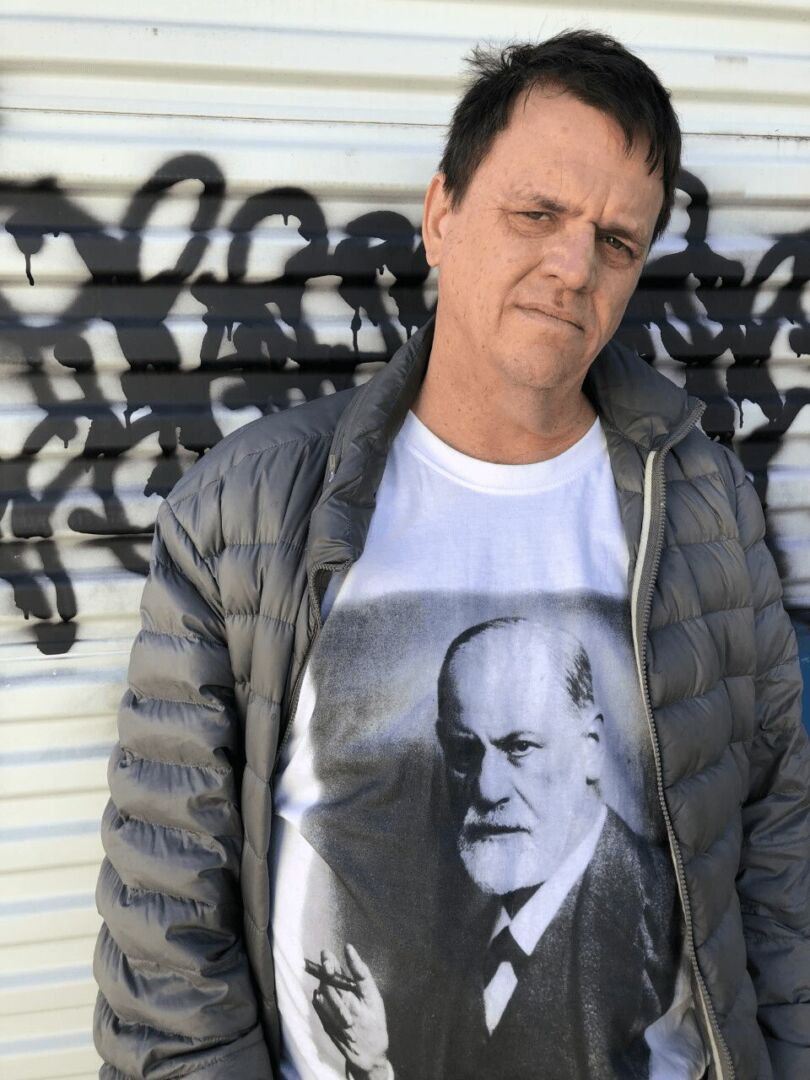
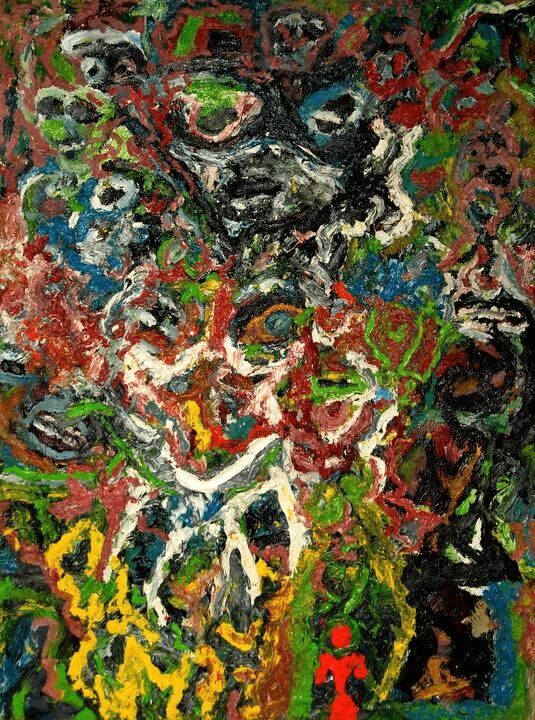
Let’s say your best friend was visiting the area and you wanted to show them the best time ever. Where would you take them? Give us a little itinerary – say it was a week long trip, where would you eat, drink, visit, hang out, etc.
If my very good friend was visiting, I’d pick them at LAX and take them back to the airport after we’d had a better time than I did in their city, which was excellent. I’d throw them a party and introduce them to my other friends, who are insightful, witty, mindful, altruistic, and accomplished, many of them in more fields than one. My very good friend and I would definitely chill in The Universal Room, my study-studio-art installation, and shoot the breeze till it shot back—ah yes, the breeze, the Breath of God. We’d go from just shooting the breeze to turning phrases till we got in my ride, buckled up, and took the scenic drive to nearby Malibu to check out the tide turning there—then jump in it! We’d go for hikes in the Santa Monica Mountains in nameless places and take my Siberian huskies for walks, on Dirt Mulholland behind my home, every sunset through twilight and beyond . . . till we could see the stars in the dark night, shining bright. We’d attend William Shakespeare’s A Midsummer’s Night Dream at the Will Geer Theatricum Botanicum. The Huntington Library, Art Museum, and Botanical Gardens would be visited, as, of course, would be LA Artcore. We’d shop for clothes on Melrose Avenue. When I had to go to work helping others help themselves at Arision Treatment Center, my very good friend would find something to do in The Universal Room alone, do something with Lil, or with somebody they met at their welcoming party. Lil is a CrossFit trainer, so my very good friend and I would do a WOD (workout of the day) or two. As far as meals, Lil loves to cook Greek, Moroccan, and Indian food. Her dishes always rock! She’s cooked Indian feasts that have been loved by too many of our family members and friends to count for a couple years longer than the 33 years of our marriage. So, yeah, there ya go, my very good friend would enjoy some home-cooked meals. The Saddle Peak Lodge, Sagebrush Cantina, Inn of the Seventh Ray, and Dr. Hogly Wogly’s Tyler Texas Bar-B-Que are restaurants that my very good friend and I would eat at. On the final full day of their visit, a Saturday, we’d split our time between Malibu Creek State Park and the Venice Boardwalk. For our last dinner together, we’d eat at Tao.
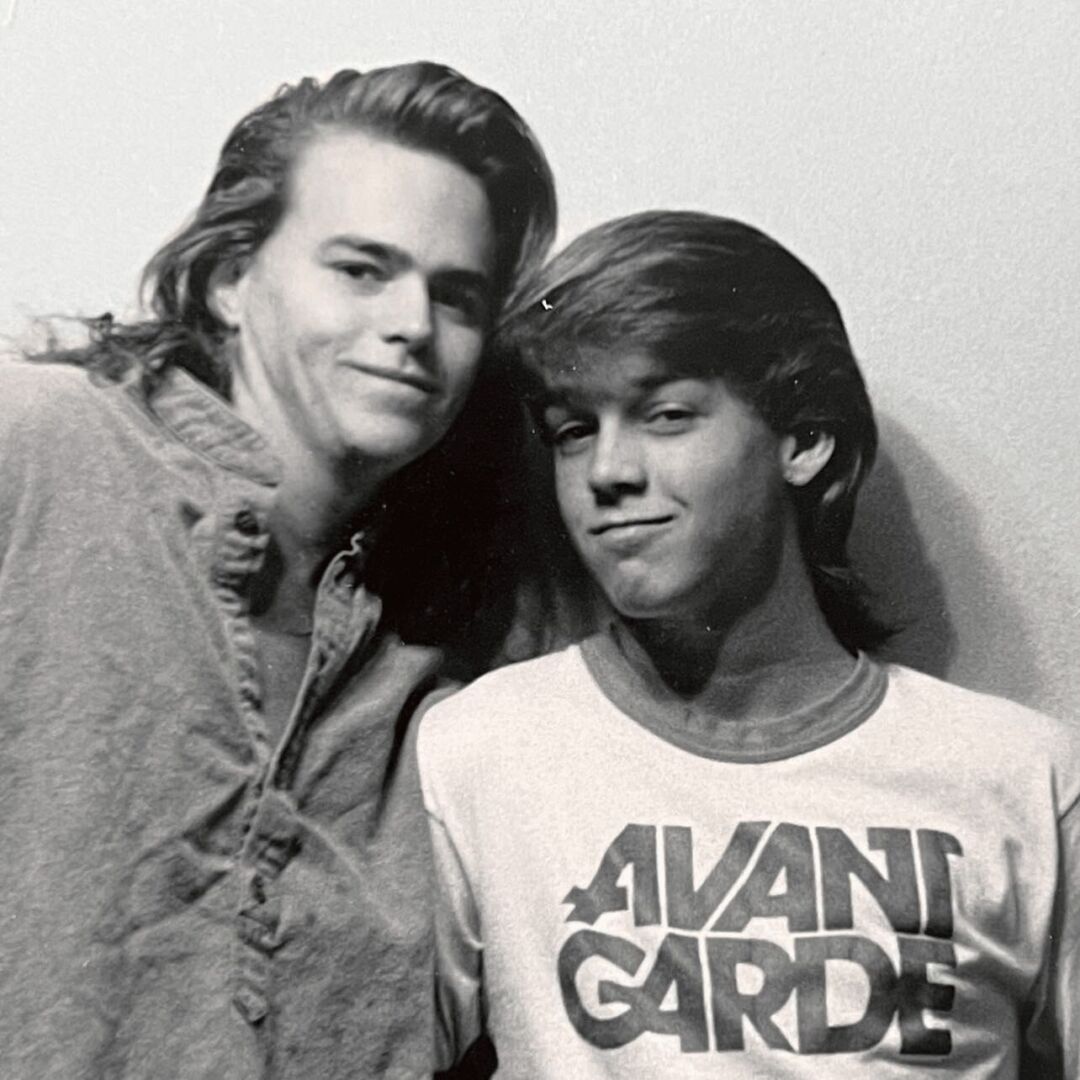

Shoutout is all about shouting out others who you feel deserve additional recognition and exposure. Who would you like to shoutout?
I’m gunna take a shot at making my shoutouts a single chant of gratitude with many coexisting elements, including one that’s decidedly punk rock with subliminal roars of protest, reform, and even revolution. A shoutout to Dr. Guillermo Bartelt, a sociolinguist and one of my CSUN professors, who taught me about Diné Night Chant, a healing ceremony about community centered on the heroic Stricken Twins. Night Chant illuminates truths about mental illness, scapegoating, exile, compassion, courage, homecoming, and how to have inclusive diversity, inclusive diversity! which is structural, not just cosmetic; a shoutout, of course, to Diné themselves, who are called Navajo by many others—yeah! a shoutout to Diné, which literally means “The People.” Night Chant has helped me frame narratives in life and at work as an author, poet, ghostwriter, journalist, chemical dependency counselor, and social activist. Another shoutout to Dr. Guillermo Bartelt for writing my recommendation letter to The Chicago School of Professional Psychology (Los Angeles). His letter helped me gain acceptance to its Forensic Psychology graduate school program; a shoutout to Dr. Debra Warner, an authority on trauma and my mentor during this formally academic period of life, for writing the introduction to Pharmacy Psalms and Half-Life Hymns—for Nothing and providing me with knowledge that’s helpful to others and myself currently as an associate professional clinical counselor. A shoutout to Gevorg Pztikyan, Hai Nguyen, and Rafael Lopez at Arision Treatment Center for their empathic insights coupled with impassioned encouragement, which have helped me grow as I continue in a lane of my journey, the lane to become a licensed professional clinical counselor. A shoutout to Carl Gustav Jung for his trailblazing work on the collective unconscious. It’s provided me with a framework to address clients’ automatic thoughts through cognitive behavioral therapy. This innovative integration has been successful with clients working to decrease their impulsivity. A shoutout in the opposite direction to Julian Jaynes for his pioneering work on consciousness and a shoutout to his legacy, the Julian Jaynes Society. Both of which have given me a proverbial treasured trove of ideas about sacred literature, authorship, the Homeric tradition, divine madness, spiritual experience, mental illness, various other states of mind, such as relatable trance states, trance states, trance states, which occur during oracular utterances, and the history of human consciousness. These ideas have been instrumental in giving me meaningful pieces of a much larger context, a panoramic, pancultural context, to sound Pharmacy Psalms and Half-Life Hymns—for Nothing from the Breath of God, the Holy Spirit, Lady Wisdom, who takes “her stand at First and Main, at the busiest intersection,” to quote The Message translation of the beginning of Proverbs 8 in the Holy Bible, the message. A shoutout to Lady Wisdom, who shouts out to every person, place, and thing and interacts with the all, interacts with even nothing, creating a chorus through me, her temple, for the sake of healing mainly from mental illness, loss and grief—on the last score, an elegy, a blues songbook, with a significant amount of spiritual warfare. What I got from Jung and Jaynes was a need to travel between consciousness and the unconscious, so I could be objective about them both—or, at least, gain perspective on them both. I found twilight, a time, and a place, a private beach, between consciousness and the unconscious, and I’ve made it public in Pharmacy Psalms and Half-Life Hymns—for Nothing. A shoutout to Viktor Frankl and Erik Erikson; by integrating their theories, I designed The Search for Meaning Life Review, an intervention that has produced positive observable and measurable results. A shoutout to Dr. Sandra Harner, a clinical psychologist and co-founder of the Foundation for Shamanic Studies, for her penetrating insights into the relationship between shamanism and existential-humanistic counseling-psychotherapy, my core theoretical orientation .A shoutout to Irvin D. Yalom for his theory of the four ultimate concerns; without this, I wouldn’t have discovered a fifth, a fifth ultimate concern, uncertainty, which I’ve addressed with clients to the ends of decreasing their anxiety and increasing their sense of wonder and awe at the relevant possibilities in their lives. A shoutout to Donna Fuller for giving me life. Yes! a shoutout to my beloved, deceased mother, whose death initiated the writing of Pharmacy Psalms and Half-Life Hymns—for Nothing, Donna Fuller, a psychotherapist and author, who did the talk-show circuit in the seventies, who was an exhibited sculptor, and who chanted, “Om, om, om . . .” when I was a child, then became a Christian mystic with a love for Saint John of the Cross, who taught me that to experience union with Lady Wisdom as my Holy Bride, I had to perfect my fear and love of God. I wouldn’t have been able to do this without the guidance of Gary Millard. This experience allowed me to take my terror of God and transform it into fear, a fear with many elements of awe. To Lady Wisdom, whom I know well enough to call Helen Aja Hammersmith-Bond (Bond, Helen Aja Hammersmith-Bond), for marrying me and spending our honeymoon in the sheets of Pharmacy Psalms and Half-Life Hymns—for Nothing with the words of St. John of the Cross as a bedspread: “That thou mayest have pleasure in everything, seek pleasure in nothing. That thou mayest know everything, seek to know nothing. That thou mayest possess all things, seek to possess nothing. That thou mayest be everything, seek to be nothing.” When Helen and I were still rolling around in the sheets (of course, the bed unmade), Mark Wrolstad contacted me to see whether I’d be up for doing an interview on Vice TV with John Formichella about the deceased Elliott Smith, one of the greatest songwriters of his generation, if not of all time, Elliott Smith whom I’m grateful to have collaborated with one Good Friday along with Steven Drozd of the Flaming Lips and Aaron Sperske of Beachwood Sparks (on skins), and I’m even more grateful to have been friends with Elliott; his songs communicate to people’s pain, including, at times, my own, more nonverbally than verbally. Elliott had asked me to write about a love triangle with a traveling preacher at its center and the nature of healing. What the Vice TV experience did was make me open to Lady Wisdom gracefully and concisely contextualizing Pharmacy Psalms and Half-Life Hymns—for Nothing in yet another way that’s universal, and based on my personal experience with this way, I believe it will help people out of pain and help them avoid it, so a big thank you to Vice TV. A shoutout to Mystic Boxing Commission’s Daniel Yaryan for his maverick spirit in publishing Pharmacy Psalms and Half-Life Hymns—for Nothing, a big book for a big world, containing 1,135 pages total, 1,021 pages of which are poetry, another shoutout to Daniel Yaryan, a multitalented man of letters extraordinaire! for putting not just a spine on this Spirituality work with many visible and invisible moving parts—proverbially speaking—but also having the supernatural vision to see the invisible with insight into how it works with the visible. A shoutout to Carroll Stockard, the publisher of Twin Volumes, my last book, a book financed by the Vatican, Carroll, Carroll, Carroll, who illustrated the cover of the Misfits Earth A.D. / Wolfsblood album, apprenticed under Frank Gehry, and has a permanent installation in MoMA; Carroll really taught me a lot about how punk subculture could coexist with what most people consider Culture with a capital “C,” Carroll, who curated my third art show. . . Carroll. Carroll, who I’ve been friends with since the eighties, finally introduced me to the Julian Jaynes Society—finally! Finally, a shoutout to Lil Gary, my twin soul, my beloved, loving wife of Flesh and Blood for 33 years, without whom I’d be dead. For 33 years, we’ve followed the advice of Khalil Gibran by letting “there be spaces in” our “togetherness,” and I’m grateful for our time together and apart: I need the latter to write. Lil has been on long tours: most notably with The Rolling Stones. A shoutout to the Stones, core and auxiliary members, especially Bernard Fowler for getting me into Ivan Neville’s All-Star Band to poeticize and dance weekly for two years, a shoutout to the Stones for distantly in my early life and then close-up and personal in my latter life, adding definition to one of the ways I see myself, which is as a free-spirit survivalist. What I’ve gotten from them is not only a stronger commitment to be myself, but also added resilience to survive others trying to make me somebody I’m not, which doesn’t mean I’m not open to growth. Of course, I’m open to growth. Growth is essential to survival! As far as all this, what’s at the bottom of free-spirit survivalism is surviving myself peacefully and passionately. Peace and passion make for that dynamic union of bliss, that vital, flowing fusion! in order to give back something to the world of real meaning, to co-create with it and, of course, with the Holy Trinity. Oh, Lil’s tours with The Rolling Stones, “the Greatest Rock ‘n’ Roll Band in the World,” in a galaxy of other rock stars, such as Matt Sorum, a real cool person, and the Eagles; another shoutout to Lil for showing me the reality of a creative environment that I’d grown up only imagining and ended up participating in during my residency with the Ivan Neville All-Star Band, a shoutout to Ivan and all my other bandmates and those part of The Mint scene who taught me how to better my work as a performer, especially Bernard Fowler, Angus Thomas, and Darryl Jones; a shoutout to my brother Jason, who’s been on film sets for most of his life with others, for others, and for himself; he co-directed the seminal documentary Modify; what I’ve learned from him in all these points of participatory power in my own professional life is that the project must come before egoic considerations, but that the lines, which define the power differentials and team duties must be fair, clear, and consistent for the process to run smoothly and effectively and, yes, happily. Me? Where have I mostly been while Lil’s on the road and Jason’s making films? Well, in this century, I’ve mostly been working on The Goddessey; or The Consumer Book of the Dead, a series of interrelated texts, and helping people in different ways in different settings, both activities ultimately to the same ends, healing. Yes, friends, healing. Healing, healing, healing. A shoutout to friends and family members, who have lovingly supported Lil and me as individuals and as a couple. One family member I have to make a personal shoutout to is my father, a stockbroker who minored in Eastern Philosophy at Occidental, who has a photograph of himself in the Baseball Hall of Fame, and who had a television movie made about his relationship with Pete Gray. My dad has, as they say, his pulse on the times, always has, and since the seventies, he’s been a Christian. Even though many of our beliefs are different—for example, he’s a Baptist, and I’m a Christian anarchist (a shoutout to Leo Tolstoy for that), we can share our differences respectfully without the volume getting louder or hitting below the belt. He’s an excellent example of being in the world but not of it, the essence of what it means to walk with Christ. My father has one arm; his challenge is visible; mine is invisible, and he has been an inspiration to me with mine, which I transmute from lead to gold—alchemy, alchemy. One of the assistants I’ve had in performing this operation was Dylan, my now deceased Siberian husky, a service dog. Our interspecies communication was loving and profound, resulting in me, a wounded healer, being more solidly one with the universe than I ever have been before. A shoutout to Journey to the HEART (Heal Earth, All Residing There) where I learned what for me, at the turn of the century, were lasting ways to become a better healer from shamankas, shamans, medicine women, and medicine men from around the world with whom I worked to have multinational corporations return rain forest territories to its Indigenous People; a shoutout to Jerry Schoenkopf, who published my journalism in Heroin Times, a shoutout to its 80,00 subscribers, a shoutout to the monthly million-plus viewers looking to sustain or find recovery from addiction, which they often found through free referrals furnished by the e-zine’s international database; a shoutout to the Jubilee Freedom Foundation, particularly Aaron Cohen, Rodleen Getsic, and Perry Farrell, with respect to the work we did to redeem slaves in Sudan, which deepened my preexisting personal and active professional understanding of sex trafficking and strengthened my resolve to abolish it, a process that’s shared in Pharmacy Psalms and Half-Life Hymns—for Nothing. All of this activism gave my life more meaning and purpose, strengthening my resolve to continue to be an agent of positive social change, and Pharmacy Psalms and Half-Life Hymns—for Nothing is an important part of this continuum, a step towards something greater in terms of psychosocial-spiritual reform. Lately, every night when Lil and I are together at dinner, we read Lao-tzu’s Tao Te Ching, a book that has helped me grow spiritually in different ways over the course of many years. Pharmacy Psalms and Half-Life Hymns—for Nothing has a 114 pages of endnotes, a proverbial cast of thousands in terms of shoutouts, too many to mention, but I would like to give William Shakespeare a shoutout mostly for, at the moment, his depth of understanding into the human psyche, the human mind, and being the first psychologist, though, of course, not strictly defined as such in today’s terms. A thunderous shoutout to Kathy Acker, the undisputed queen of punk literature, for her gutsiness as an author because it’s meaningfully added to my own; a shoutout to T.N. Ganapathy for writing The Philosophy of the Tamil Siddhas. It meaningfully contributed to the bedrock for my creation of transatlantic twilight language. A shoutout to Swami Muktananda for living what it took to write Kundalini: The Secret of Life. This book helped me as a practitioner and teacher of Kundalini yoga on and off the mat. It still does off. A shoutout to Georg Feurstein for his book Tantra: The Path of Ecstasy, a shoutout to André Van Lysebeth for his book Tantra: The Cult of the Feminine. The first book sharpened my thoughts about Tantra. The second deepened my emotions about it. They both expanded my practice of Judeo-Christian Tantra, how I weave and unweave everything and nothing, with Lady Wisdom, the Holy Feminine. A shoutout to Gershom Scholem for describing, in Origins of Kabbalah, tefillah as the prayerful path of returning the word back to its source, nothing. Nothing!!! This road trip is a mystical aspect of Pharmacy Psalms and Half-Life Hymns—for Nothing, one of its narrative threads related to–of all things! my published work on quantum cosmology. The mysticism and science share the aforementioned work’s spine. A shoutout to those with whom I’ve chanted in the Malibu sweat lodge on the Wright Land, a shoutout to those with whom I’ve chanted in Nichiren Shōshū of America, and a shoutout to Markandeya for composing Chandi Path also known as The Durga Saptasati and The Devi Mahatmyam with its Mantra that Bestows Life from Death, which was central to my Kundalini yoga practice, then important in processing my grief on and off the page: “Om all existence, all existence, vibrations, vibrations, wisdom, wisdom, Oh knowledge that bestows life from death, raise from death, transformation, all existence, all existence, vibrations. . . .” A shoutout to Shoutout LA for interviewing others and me, opening, connecting, and strengthening channels of inclusive diversity in Los Angeles, the City of Angels!
Website: https://sparringartists.com
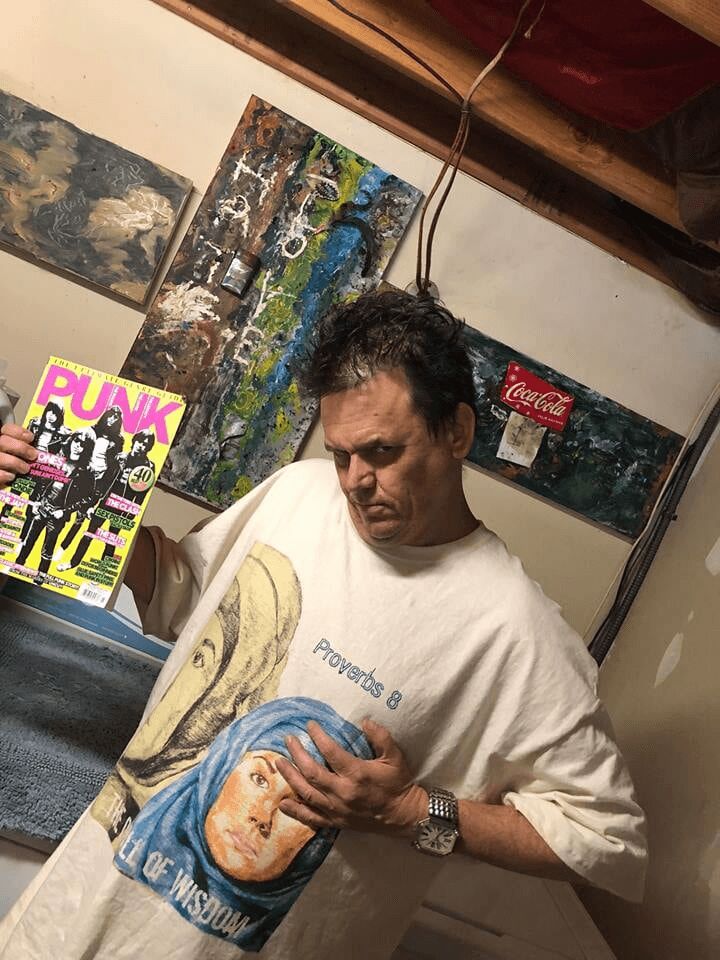
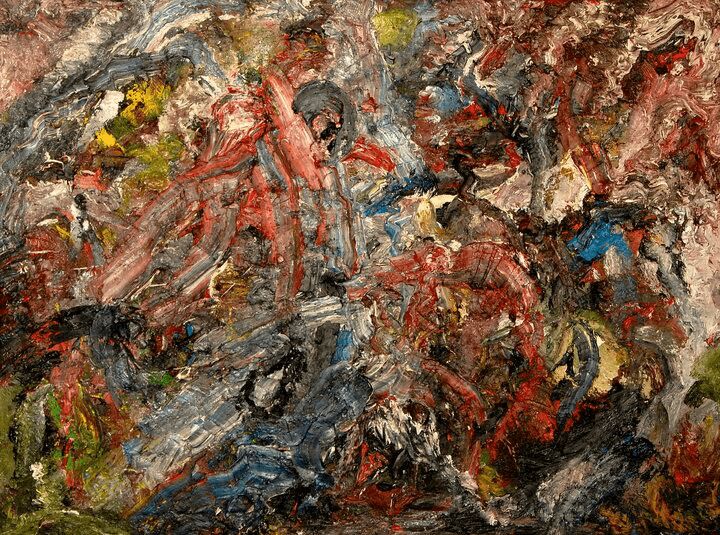
Image Credits
Personal photo: Nelson Gary, The Universal Room
First painting: Nelson Gary, Queen of Sheba (previously reproduced in Spectrum)
Nelson and Jason Gary (Meg Ray, 1987)
Nelson and Lil Gary with Dylan at LAX
Final image, painting: Nelson Gary, Crucified with Christ
